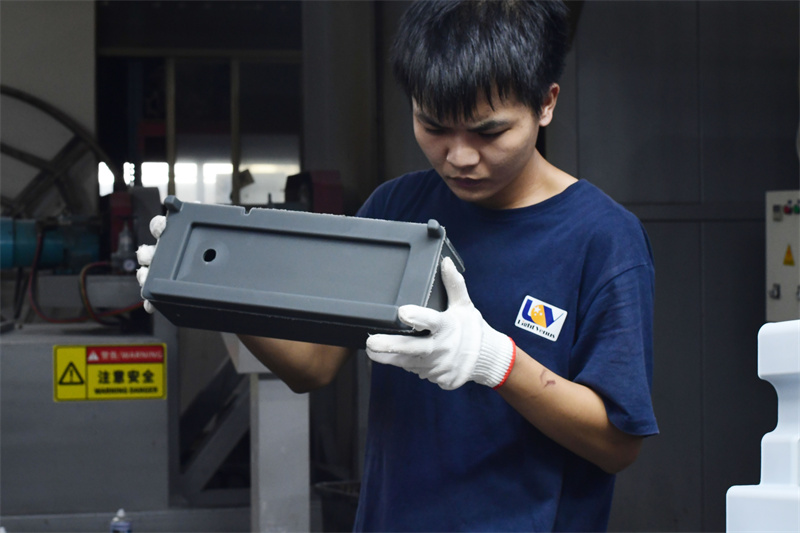What are the Specific Applications of Rotational Molding in the Automotive Industry
 Nov 07,2024
Nov 07,2024

What are The Specific Applications of Rotational Molding in the Automotive Industry?
Rotational molding is widely used in the automotive industry for a variety of applications due to its ability to produce strong, durable, and complex-shaped parts. Here are some specific applications of rotational molding in the automotive industry:

1. Fuel Tanks
Rotational molding is an excellent method for creating fuel tanks due to its ability to produce seamless, durable, and leak-proof containers. Rotomolded fuel tanks can withstand the rigors of daily use. The process allows for the integration of features like baffles, which help to reduce fuel sloshing and improve vehicle stability.
2. Truck Mudguards
These are typically exposed to harsh conditions and need to be robust. Rotational molding provides the necessary strength and resistance to wear and tear.
3.Dashboards
The flexibility of rotational molding enables the creation of dashboards with intricate designs and ergonomic features. These dashboards can be tailored to fit the specific design and safety requirements of different vehicle model
4. Door Panels
Similar to dashboards, door panels produced through rotational molding can be designed with complex curves and integrated features such as armrests, storage compartments, and electronic interfaces.
5.Tool Boxes
Durable and weather-resistant toolboxes can be rotationally molded to provide secure storage for tools in the bed of trucks or other vehicles.
6. Storage Containers
The automotive industry often utilizes rotational molding for creating storage containers that are both functional and aesthetically pleasing. These containers can be found in various parts of the vehicle, including trunk spaces and under-seat storage areas.
7. Air and Fluid Ducts
The process is well-suited for manufacturing ducts and conduits that transport air and fluids throughout the vehicle. These parts can be designed with smooth inner surfaces to optimize airflow or fluid dynamics.
8. Bumpers and Spoilers
Rotational molding can be used to produce vehicle bumpers and spoilers. These parts can be made with a combination of rigid and flexible materials to absorb impact and improve vehicle aerodynamics.
9. Seat Back Head-Restraint Covers
Seats and Seating Components: The process allows for the creation of seating components that are both comfortable and durable. This includes the molding of seat bases, backrests, and armrests.
10. Battery Cases
For electric and hybrid vehicles, rotational molding can produce strong and sealed battery cases that protect the batteries from damage.
11.Armored Vehicle Components
Due to the strength and durability of rotational molding, it can be used to create components for armored vehicles that require high levels of protection.
12. Truck Beds and Liners
In the production of trucks, rotational molding is used for manufacturing truck beds and liners. These parts are made to be durable and resistant to harsh weather conditions and heavy loads.
13. Automotive Exterior Components
Various exterior trim pieces and accents, which require both aesthetic appeal and functional durability, can be produced through rotational molding.
14. Custom Vehicle Parts
The flexibility of rotational molding allows for the creation of custom parts that meet specific design and functional requirements, which may not be feasible with other manufacturing methods.
The use of rotational molding in these applications is driven by its advantages, such as design flexibility, cost-effectiveness, and the ability to produce parts with uniform wall thickness, which is essential for ensuring structural integrity and performance. As the industry continues to evolve, rotational molding will undoubtedly remain a key technology in shaping the automotive industry of the future.
 Tel: 0086-13632687993
Tel: 0086-13632687993  Email: roto@lightvenus.com
Email: roto@lightvenus.com

 Home
Home The Specific Applications of Rotomolded Plastic Lamp Shades in Outdoor Lighting
The Specific Applications of Rotomolded Plastic Lamp Shades in Outdoor Lighting  You May Also Like
You May Also Like



 Tel
Tel
 Email
Email
 Address
Address








